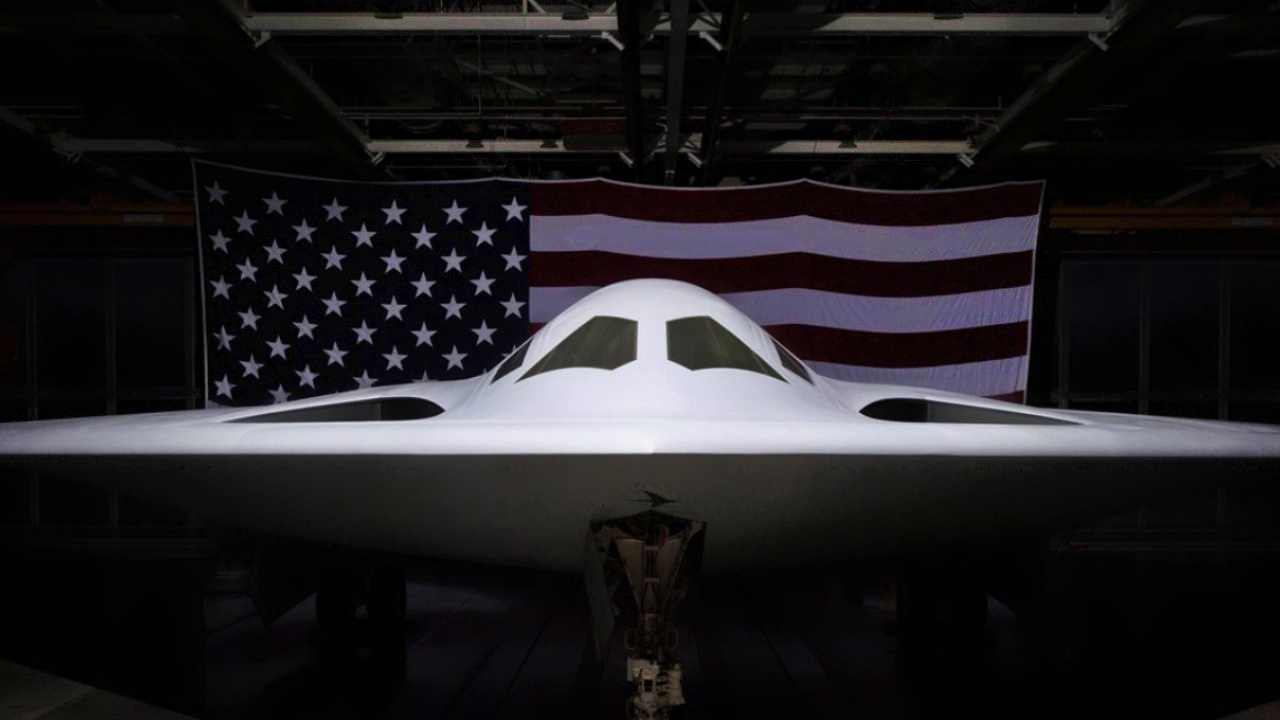The B-21 Raider and the Size Question – Key Points and Summary: The B-21 Raider’s more compact airframe compared to the B-2 Spirit is not a limitation but a deliberate evolution in strategic bomber design.
-Decades of technological progress allow the B-21 to achieve a superior level of all-aspect stealth with a smaller and more efficient profile.

B-21 Raider. Image Credit: Creative Commons.
-This approach makes the bomber more affordable to produce in large numbers.
-Furthermore, its advanced, fuel-efficient engines are expected to give it intercontinental range despite its reduced size, reflecting a modern doctrine that prioritizes precision and survivability over the massive, costly platforms of the Cold War.
The B-21 Raider: A Size Debate?
The newest American bomber, Northrop Grumman’s B-21 Raider, will soon be in service with the United States Air Force — and though much about the bomber is unknown and will remain so, it seems clear that the sixth-generation stealth bomber is somewhat smaller than its predecessor, the Cold War-era B-2 Spirit bomber.
Although both stealth bombers share a flying-wing design, which reduces drag and the bombers’ radar cross-section —a measure of detectability by adversary radars —the U.S. Air Force touts the newer bomber as the world’s first sixth-generation bomber.
Leveraging new technologies, particularly updated radar-absorbent coatings, engines buried within the fuselage, and uniquely contoured windows optimized for stealth, the B-21 will be a significantly stealthier platform.
But despite the new technologies, the B-21’s design is relatively “safe.”
“The design of Northrop Grumman’s B-21 Raider points to a conservative approach on the part of the U.S. Air Force’s Rapid Capabilities Office. The B-21’s resemblance to the original B-2 bomber design is close, but it is a smaller aircraft, with a wingspan estimated at 132 ft. compared with the B-2’s 172 ft., and is approximately half the empty weight,” Aviation Week explains.
“The planform itself is driven by the need to accommodate complex inlets and exhausts and a large weapon bay within the flying-wing profile while staying within a maximum thickness-to-chord ratio compatible with efficient flight above Mach 0.8.”
B-21 Design
A richly detailed and interactive cutaway schematic from Aviation Week shows the location of the B-21 Raider’s likely design features.
The B-21’s smaller size and subsequently smaller internal volume have been cited as evidence for the newer bomber’s supposedly lower range compared to the larger B-2 Spirit bomber. However, higher-bypass engines, which are better suited to subsonic, long-range flight, power the B-21 and boost its range.
“On the B-2, the low-bypass GE F118 engine was selected because it was too risky to place a higher-bypass engine, more sensitive to flow distortion, behind the curved and RAM-treated inlet ducts needed to hide the fan face from radar,” Aviation Week’s Bill Sweetman, an aviation expert, explained. “With the aid of better CFD, that problem can be eliminated: Northrop Grumman proposed a large bomber UAV in 2005, powered by two modified GE CF34 turbofans, and Lockheed Martin flew the Polecat demonstrator in 2006 with two Williams FJ44s.”
“A higher bypass ratio provides much better specific fuel consumption than the B-2’s fighter-type engine, improving range, and would enable a cooler, lower-velocity exhaust, not only lowering the B-21’s infrared signature but also alleviating thermomechanical stress on the open “aft deck” area of the exhaust, immediately ahead of the trailing edge.”
Despite pointed criticism having been raised about the B-21’s supposed range limitations, given the bomber’s somewhat smaller internal dimensions. But if the new bomber’s engines are more efficient, then a smaller overall airframe size could make the Raider harder to detect, without reducing the jet’s range.
“The center-body section [of the B-21 Raider] matches images of highly serpentine inlets mated to a medium-bypass engine,” Aviation Week explains. “Pratt & Whitney discussed such an engine, the PW9000, as a future bomber powerplant in 2010 but has not mentioned it since. The PW9000 used the core of the PW1000G commercial engine family, mated to a direct-drive fan with a 4:1 bypass ratio.”
Though outwardly fairly similar, the B-2 Spirit’s requirements changed late in the design process. A low-altitude flight capability resulted in a change to the bomber’s “tail” area, adding additional control surfaces to counter turbulence at low altitude. Though that design adjustment allowed the bomber to retain control at low level, it added cost and weight to the design. According to Aviation Week, the B-2’s low-level flight capability was never utilized. The B-21 appears to eschew a low-level flight requirement, as indicated by its distinctive rear aspect design.
What Comes Next for This New Stealth Bomber?
Many details about the B-21 Raider program remain unknown and are likely to remain so. Even the total acquisition numbers are seemingly in flux at the moment.
However, the B-21 will undoubtedly be a significantly more advanced bomber than the B-2. And given advances in engine technology, could have better range thanks to improvements in fuel economy.
About the Author: Caleb Larson
Caleb Larson is an American multiformat journalist based in Berlin, Germany. His work covers the intersection of conflict and society, focusing on American foreign policy and European security. He has reported from Germany, Russia, and the United States. Most recently, he covered the war in Ukraine, reporting extensively on the war’s shifting battle lines from Donbas and writing on the war’s civilian and humanitarian toll. Previously, he worked as a Defense Reporter for POLITICO Europe. You can follow his latest work on X.
The Best Tanks on Earth
AbramsX: The Tank the US Army Wants











Pingback: The B-21 Raider Stealth Bomber Is Already A Smash Hit - National Security Journal